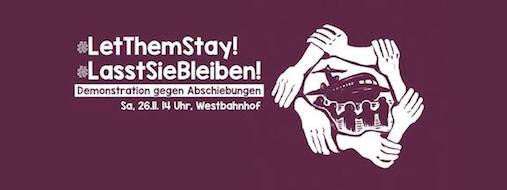

But not even those who have managed to reach their country of destination can rest assured. Since July 2016, Austria has been regularly deporting those refugees who arrived while the Balkan corridor was open. Many of the deported had been in Austria for months; some had already started the process of integration in anticipation of a future in Austria, since they are often entitled to receive international protection in the country. According to the data, about 3,300 migrants from Syria, Iraq and Afghanistan have been deported from Austria in the last year, and 275 of them ended up in Croatia. More returns are expected to follow, since the Austrian Minister of Internal Affairs has sent a request to return 1,782 migrants back to Croatia.
From Austria, migrants and asylum seekers are transferred to hotel Porin, an old hotel fallen into disuse on the outskirts of Zagreb. The hotel is overcrowded, with people sleeping in any space available, including in corridors. Families are also hosted inside, although families are supposed to be located in the reception centre of Kutina, 75 km from Zagreb, which handles vulnerable cases. But in Kutina the reception threshold has already exceeded its capacity.
Since the deportations to Croatian territory began, grassroots committees have sprung up throughout the villages in the border areas, and activists travel regularly to meet the refugees in Croatia. They cross the borders with their cars full of baby food and care packages, and return those personal belongings that the migrants had to leave behind in the rush of leaving Austria with such short notice. Many of these migrants had already been in contact with these activist groups when they were in Austria, often having been hosted in their families as part of the integration process.
How is it possible for Austria to send back migrants who have already crossed the border and started their asylum procedure in the country? According to the Dublin III Regulation, an EU country can send an asylum seeker back to the first EU country of arrival so long as this is considered safe, meaning that it upholds the rights of asylum seekers. Austria considers Croatia a safe country, hence the migrants who came into Austria via Croatia are returned there. Although Greece was the first EU country of arrival for most of the refugees, they cannot be returned there owing to the collapse of the Greek asylum system. In accordance with the Dublin III Regulation, Austria thus deports the refugees to the second EU country of arrival, Croatia, which then becomes responsible for their asylum procedure. The process works as follows: the Austrian Minister of Internal Affairs sends a request to his Croatian counterpart, demanding they take over the asylum procedures of migrants who passed through Croatian territory. If Croatia does not object within a period of two months, the deportations begin automatically within four weeks, as silence is considered consent.
The topic of refugees has sharply divided Austrian society between supporters and opponents of the country’s reception policies. Nevertheless, part of civil society has recently decided to take a stance against the deportation of refugees, organizing candle-light vigils and sit-ins in 13 Austrian cities on November 13. The news of the deportations to Croatia started to appear in international media as well, thanks especially to the information campaign organized by grassroots committees like “Border Crossing Spielfeld” and civil society organizations all over Austria.
Several Austrian lawyers are claiming that the deportations to Croatia are illegal. The deportation to the first EU country of arrival is in fact allowed if the asylum seeker entered the country illegally. But those who are now being deported arrived in Austria while the Balkan corridor was open, when Dublin III was suspended, and transport was organized and controlled by the states themselves in order to let migrants pass without legal consequences. Dublin III cannot have a retroactive effect, the lawyers claim. Furthermore, migrants now risk being deported from Croatia to Serbia, a country considered unsafe for asylum seekers.
Unfortunately, this seems to be in line with Austrian migration policy. In January 2016, Austria stated that a maximum of 37,500 people were allowed to seek asylum in the country for the year. Those left over would be turned away once the threshold had been reached, either by pushing them back or deporting them to the country of arrival. At the end of September, the asylum requests already amounted to 75% of the total for the year. However, an emergency decree approved in May 2016 authorizes the state to reject any asylum requests if the country finds itself in a declared state of emergency.
Again, civil society does not remain silent. On November 26 a demonstration will take place in Vienna to call for the immediate halt of deportations to Croatia for all asylum seekers who were registered in Austria during the period in which the Balkan corridor was open. In their communiqué, the organizer, Platform for a Human Asylum Policy (Plattform für eine menschliche Asylpolitik), demands that the government take responsibility for the asylum applications submitted in Austria up to the point of the official closure of the Balkan route, as well as the right to return for all those who have been deported up to now.